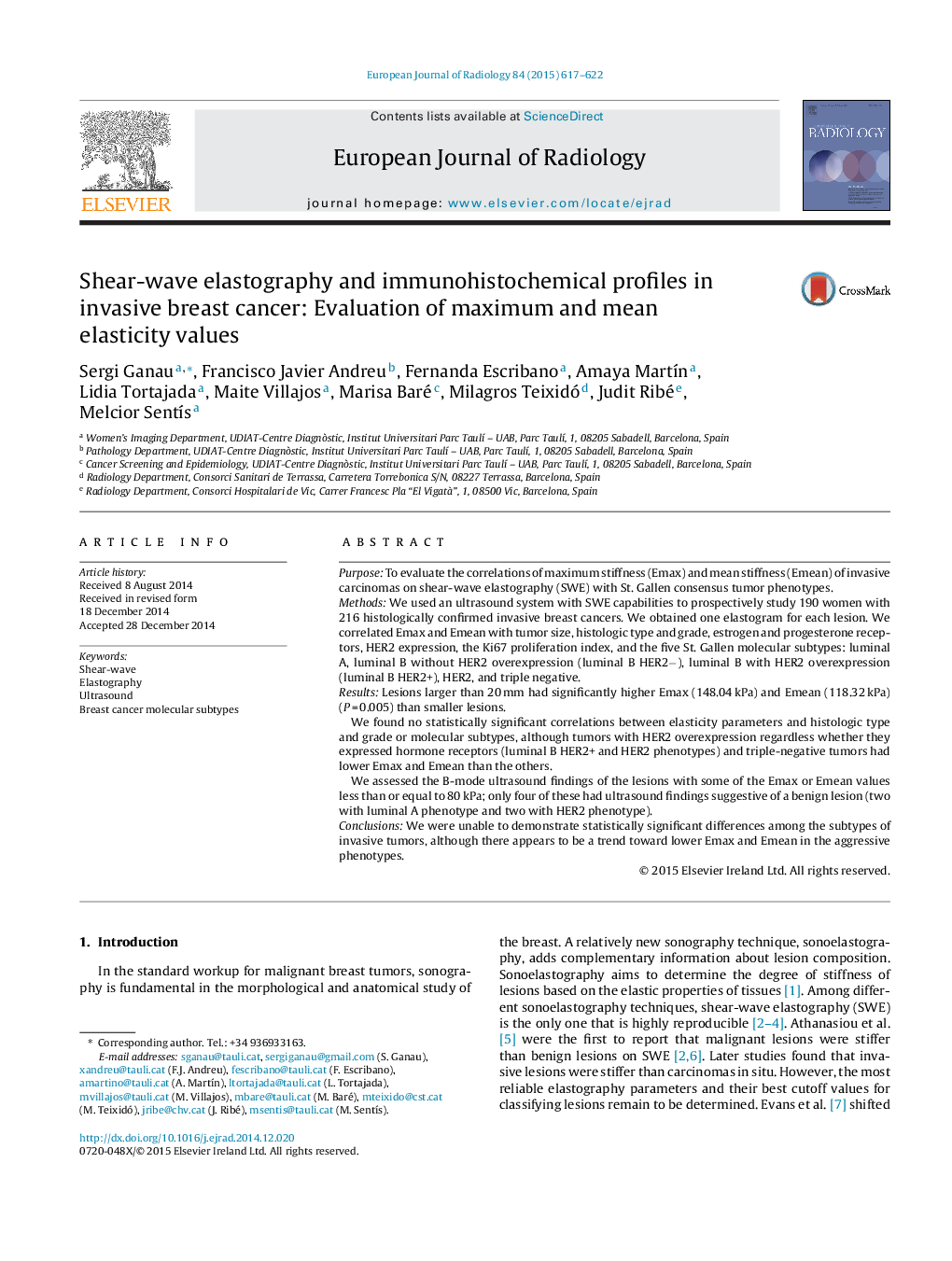| Article ID | Journal | Published Year | Pages | File Type |
|---|---|---|---|---|
| 4225138 | European Journal of Radiology | 2015 | 6 Pages |
•Shear wave elastography provides a quantitative assessment of the hardness of breast lesions.•The hardness of breast lesions correlates with lesion size: larger lesions are harder than smaller ones.•Histologic type and grade do not correlate clearly with elastography parameters.•HER2, luminal B HER2+, and triple-negative tumors have lower maximum hardness and mean hardness than other tumor types.•Half the tumors classified as BI-RADS 3 were luminal A and half were HER2.
PurposeTo evaluate the correlations of maximum stiffness (Emax) and mean stiffness (Emean) of invasive carcinomas on shear-wave elastography (SWE) with St. Gallen consensus tumor phenotypes.MethodsWe used an ultrasound system with SWE capabilities to prospectively study 190 women with 216 histologically confirmed invasive breast cancers. We obtained one elastogram for each lesion. We correlated Emax and Emean with tumor size, histologic type and grade, estrogen and progesterone receptors, HER2 expression, the Ki67 proliferation index, and the five St. Gallen molecular subtypes: luminal A, luminal B without HER2 overexpression (luminal B HER2−), luminal B with HER2 overexpression (luminal B HER2+), HER2, and triple negative.ResultsLesions larger than 20 mm had significantly higher Emax (148.04 kPa) and Emean (118.32 kPa) (P = 0.005) than smaller lesions.We found no statistically significant correlations between elasticity parameters and histologic type and grade or molecular subtypes, although tumors with HER2 overexpression regardless whether they expressed hormone receptors (luminal B HER2+ and HER2 phenotypes) and triple-negative tumors had lower Emax and Emean than the others.We assessed the B-mode ultrasound findings of the lesions with some of the Emax or Emean values less than or equal to 80 kPa; only four of these had ultrasound findings suggestive of a benign lesion (two with luminal A phenotype and two with HER2 phenotype).ConclusionsWe were unable to demonstrate statistically significant differences among the subtypes of invasive tumors, although there appears to be a trend toward lower Emax and Emean in the aggressive phenotypes.
